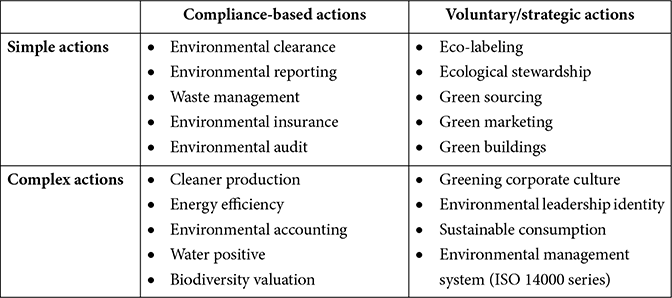PREFACE
It happened in the summer of 1992, when I was the CEO of the Plantation Corporation of Kerala Ltd, the largest single holder of rubber, cinnamon and cashew plantation in India. A systematic replanting scheme was started in the previous year to replace the old varieties with new high-yielding varieties, and oil palms were introduced in the estates. Th ere were more than 7000 permanent workers and their families staying in the labor quarters within the plantations. A scheme was drawn up to auction out tranches of land for intercropping with tapioca, banana, pineapple and vegetables in the inter-spaces of the newly planted areas. The aim was to bring supplementary income to the workers and the local community. Aſt er six months of implementing this socially oriented initiative, newspapers reported sedimentation in a check dam and water shortages that affected the drinking water supply to the downstream community. The effort to enhance the productivity of the land and provide supplementary income to the workers and local community had turned out to become an irritant that had unintended consequences on the environment. I realized that though the environment had remained silent and beautiful, the supplementary income scheme evoked vehement reactions.
A decade later, as joint Transport Commissioner of the State and later as the CEO of the Transport Development Finance Corporation in 2003, with the responsibility of regulating automobiles and training drivers in the state, I witnessed the new automobile boom on the road, causing pollution, congestion and an increased number of road accidents. Subsequently, as Senior Advisor of the Council for Science, and Environment, I could observe that the technology generated in the research institutions was not reaching the field. These experiences kindled an urge in me to highlight the steps that should be taken to save our environment from being degraded further. Later, while handling the subjects of strategic management and environmental management for MBA students in management education institutions, I realized the need for a book on environmental management that seamlessly integrates into it the concepts of strategic management so that students and management practitioners in any sector could be benefitted by the resultant comprehensive inputs. The result is this book, presented to all students, whether they are in engineering colleges, management institutes, science colleges, law colleges or journalism institutes, and managers, who may be in the corporate sector, government sector, civil society organizations or media houses. The book is written using lucid and simple words to ensure that language does not become a barrier for understanding. The experiential learning I had gathered during the past 20 years is organized into 19 chapters.
Though the chapters are not compartmentalized, most of the chapters reflect these four parts:
- Understanding the philosophy and science of environment
- Awareness of the environment and its various dimensions
- Environmental management systems and resources
- Business opportunities and environmental strategy.
Each chapter starts by spelling out the learning objectives to help the reader capture the essence of the topic of discussion. With due care taken not to be prescriptive, the book adopts an educational approach with a developing country as the context. The book attempts to cover the current aspects of environmental management in an effort to present an ideal handbook for managers, engineers, architects, journalists, lawyers, entrepreneurs, auditors, NGOs, and just about anyone who wants to make the world a better place to live and work in. The questions, given at the end of each chapter, are intended to facilitate discussion and debate on the various concepts covered in the book and to inseminate an overall understanding of the subject. They have been framed to encourage the reader to revisit several chapters, as the book is not designed for a linear reading.
At the end of each chapter is a concise summary that encapsulates the significant learning points from the management perspective. For the sake of simplicity and directness, concepts and aspects are described with minimum words; those who want more information can get it from the references provided at the end of the book. Bullet points are used rather than a narrative paragraph for brevity and to get more from less reading. Interesting pieces of information, examples, counter-arguments and interesting insights are presented as boxed elements, in addition to a brief biography of environment stars – those who have made a significant contribution to the development of the art and science of environmental management during the 20th and 21st centuries. Since youth are a link between the present and the future, an entire chapter is devoted to the career options in environmental management as Chapter 19, in addition to biographies of several environmental stars and inspiring quotations for reflection.
Business firms, in their quest for sustainable competitive advantages, have the vast arena of the environmental domain for opportunities. In order to assimilate these opportunities into the strategic management process, several frameworks are out in the open and many are emerging. The frameworks include various practices or initiatives a business can adopt as part of its environmental management system, such as greening different phases within its operations and strategic process. The framework discussed in the book can be grouped in a matrix, as given below, with simple and complex actions and compliance-based and voluntary actions.

The book, through its 19 chapters, shows the pathway to for-profit and not-for-profit organizations, to retain competitive advantages while embracing ecological sustainability. Students, professionals and managers who would be the future public and private sector leaders stand to be benefitted by the book as it brings together the previously delinked or inadequately linked elements of strategic and social management with the scientific principles of environmental management.
I hope this book will create in every reader, a dream of a pristine nature and bestow enough knowledge, skills and methods in him to realize that dream through his decisions and actions in everyday life.
Dr Jacob Thomas
[email protected]
